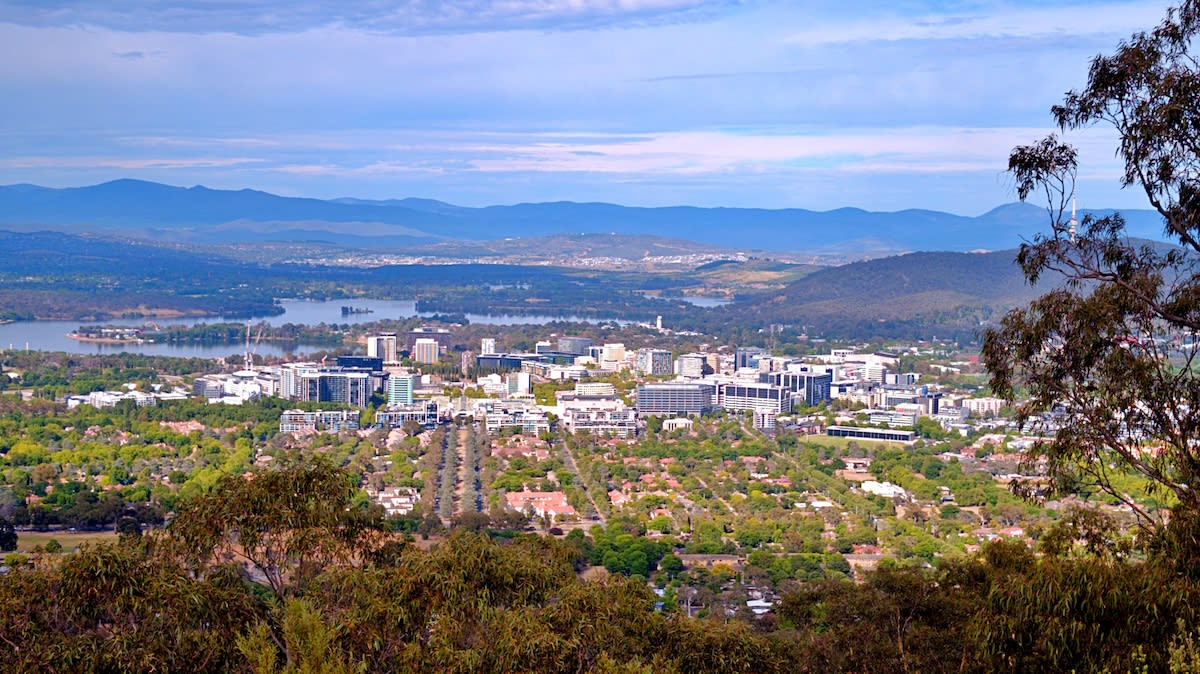"We're only just getting started" Geocon's Andrew Clark on the future of apartment development in Canberra
As one of Canberra’s most prolific developers, Geocon has had a front-row seat to the evolving dynamics of the ACT’s apartment market — and according to Andrew Clark, General Manager of Development, the capital is only now beginning to realise its potential.
“Canberra’s really just coming of age,” Clark says. “We’re seeing consistent growth, and the fundamentals are incredibly strong — population is forecast to increase by around 9,500 people a year for the next five years, a highly educated buyer pool, and a government steadily investing in infrastructure.”
Geocon currently has two major projects in the planning stage. One is in Woden, where the Phillip Swimming and Ice Skating Centre site will be transformed into a three-stage development. The first stage, currently under review under the ACT’s updated Territory Plan, includes a new 25-metre indoor pool and splash park, along with 285 apartments — one of the first large-scale projects to move through the new framework.
“This is really a benchmark for how civic infrastructure and residential development can co-exist,” Clark says. “It’s a strong statement about what modern infill can look like in Canberra.”
The Woden development. Image supplied
Geocon’s other main focus is in Braddon, where the developer recently acquired a 10,663 sqm site on Northbourne Avenue. The site is slated for around 558 apartments and is still in early DA stages.
This project joins a growing list of higher-density developments pushing closer to public transport corridors — a clear priority under recent ACT Government strategies.
For Clark, the shift to infill and higher-density living isn’t just a planning directive, but a market inevitability.
“We’re seeing a widening gap in housing affordability between freestanding homes and units. For many first-home buyers and investors, units remain the more realistic entry point, especially as the cost of land and detached housing continues to climb, due to limited supply. That shift is having a real impact on buyer behaviour, particularly for families who still value the long-term benefits of owning land but are being priced out. It’s no surprise the market has been pushed toward more multi-unit developments — and frankly, it makes sense.” he says.
Clark also points to the environmental and infrastructure benefits.
“Infill helps us put more people closer to public transport and activity centres. That reduces car reliance and supports investment in things like light rail, which in turn drives more growth.”
Clark notes that while apartment living is more established in cities like Sydney, Melbourne, Brisbane and the Gold Coast, Canberrans are starting to embrace the shift.
Investor interest has been growing in recent months, particularly from Sydney, with vacancy rates in Canberra sitting at just 1.5 per cent.
“There’s a good level of investor confidence in Canberra, and that hasn’t really changed. It’s a secure, stable place to invest — and that’s attractive when you're looking long term,” Clark says. “We’ve got solid relationships with agents across the country. And even though our core marketing is local, we know how to tap into that national interest.”
Looking ahead, Clark sees continued pressure on supply, particularly as the ACT’s population forecasts and housing targets outpace the current development pipeline.
“The government has acknowledged that urban infill is a critical part of the future land release programme, and their legislative changes reflect that. But even with that, we’re not really keeping up with demand. There’s still a lot of upside here.”
With the University of New South Wales recently lodging plans for a new Canberra campus, and light rail expansion progressing, Clark is optimistic about the region’s trajectory.
“The university sector has grown significantly, and that growth flows through the broader economy. At the same time, Canberra’s strong public sector presence underpins a wide range of private sector activity. That solid economic base gives the city a level of stability and insulation that many other cities simply don’t have.”
Ultimately, Clark sees Canberra continuing to evolve into a unit-driven market — not just for investors and students, but for professionals and downsizers who now see apartments as a viable long-term option.
“People are rethinking the quarter-acre dream,” he says. “It’s taken time — and there’s still work to do in appealing to families — but we’re seeing that shift.”
And as the city continues to grow, so too will the scale and ambition of its projects. “We’re ready for that next chapter. Canberra’s not a ‘maybe’ market anymore — it’s a market with a future.”
Joel Robinson
Joel Robinson is the Editor in Chief at Apartments.com.au, where he leads the editorial team and oversees the country’s most comprehensive news coverage dedicated to the off the plan property market. With more than a decade of experience in residential real estate journalism, Joel brings deep insight into Australia’s evolving development landscape.
He holds a degree in Business Management with a major in Journalism from Leeds Beckett University in the UK, and has developed a particular expertise in off the plan apartment space. Joel’s editorial lens spans the full lifecycle of a project—from site acquisition and planning approvals through to new launches, construction completions, and final sell-out—delivering trusted, buyer-focused content that supports informed decision-making across the property journey
